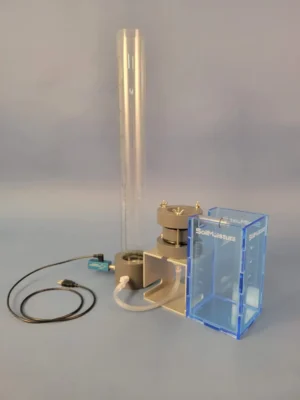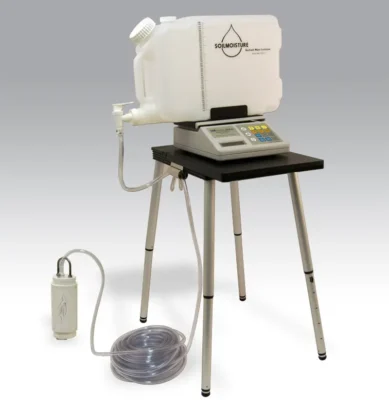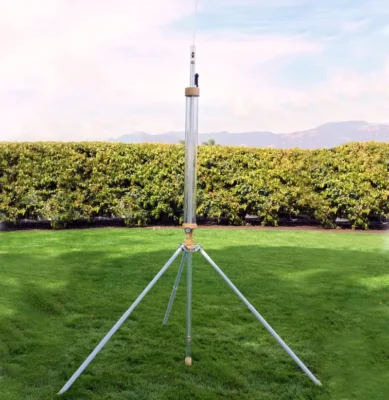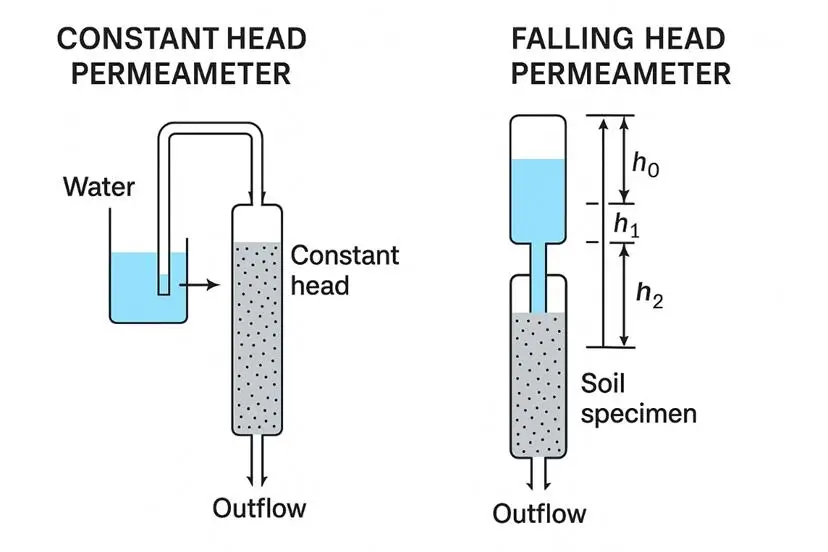Soil Permeameters

A permeameter is a laboratory device used to measure the permeability (or hydraulic conductivity) of subsurface soils and other porous materials —typically soils, rocks, or membranes—to water or other fluids. A permeameter measures how easily water passes through a material. Water flow through soil is measured using a permeameter. Whereas, an infiltrometer measures how quickly water moves from the surface into the ground and is typically done in the field.
determines how water can flow through a material is crucial for applications in civil engineering, environmental science, agriculture, and hydrology.


Learn More About Each Permeameter
Request a Quote
Need more information? We’re here to help!
Tell us a bit about yourself and your question and we’ll get back to you ASAP.
Types of Permeameters
Constant Head Permeameter
Used for coarse-grained soils like sand and gravel. Water is allowed to flow through the soil sample under a constant / steady hydraulic head, and the flow rate is measured to determine permeability.
Falling Head Permeameter
Suitable for fine-grained soils like silts and clays. Water is allowed to flow through the soil sample column, and the decreasing water level (head) over time is recorded to calculate permeability.

Applications
View Case Use Examples
1. Landfill Leachate Management
Scenario:
A city is planning to build a new sanitary landfill. One major concern is leachate. The liquid that drains from waste risks polluting nearby groundwater. Why it matters: This testing ensures the landfill won’t contaminate groundwater, protecting local drinking water sources and ecosystems.
Use of a Permeameter:
- Engineers collect soil samples from the proposed landfill site.
- In the lab, they use a falling head permeameter to measure the hydraulic conductivity of the native clay layer beneath the site.
- If the permeability is very low (e.g., < 1×10⁻⁷ cm/s), the clay is considered a good natural barrier to leachate migration.
- If it’s too permeable, they may need to add a synthetic liner or engineer a compacted clay liner to meet environmental safety standards.
2. Agriculture Irrigation Planning
Scenario:
A farm in a semi-arid region wants to optimize its drip irrigation system for a new crop.
Use of a Permeameter:
- Agronomists take soil samples from several zones in the field.
- Using a constant head permeameter, they test the soil’s infiltration rate.
- They discover that:
- Sandy zones allow fast water movement.
- Clay-rich zones retain water longer.
Outcome:
- The irrigation system is adjusted:
- Less frequent watering in clay zones to avoid overwatering.
- More frequent, shorter watering in sandy areas to prevent drying out.
- This improves water use efficiency, reduces runoff, and supports better crop yields.
3. Civil Engineering: Road Construction
Scenario:
A highway is being constructed through a rural area, and engineers need to ensure proper subgrade drainage beneath the pavement.
Use of a Permeameter:
- Engineers collect soil samples along the planned route.
- A falling head permeameter test is conducted to evaluate the drainage capacity of subgrade materials.
- Results show that certain sections have low permeability, which could cause water to accumulate under the road.
Outcome:
- Engineers design a drainage layer and include geotextiles in low-permeability areas.
- This prevents pavement cracking, frost heave, and road degradation over time.
| Sector | Application Examples | Type |
|---|---|---|
| Agriculture and Turf |
| Both Types |
| Constant Head | |
| Falling Head | |
| Environmental and Water Resource Management |
| Falling Head |
| Constant Head | |
| Both Types | |
| Constant Head | |
| Falling Head | |
| Land Use and Urban Planning / Research |
| Falling Head |
| Falling Head | |
| Both Types | |
| Both Types | |
| Constant Head | |
| Civil Engineering /Geotechnical Engineering |
| Falling Head |
| Falling Head | |
| Constant Head | |
| Constant Head | |
| Falling Head | |
| On-site Wastewater Disposal |
| Falling Head |
| Falling Head |
Downloads
Download Stevens’
Product Catalog

